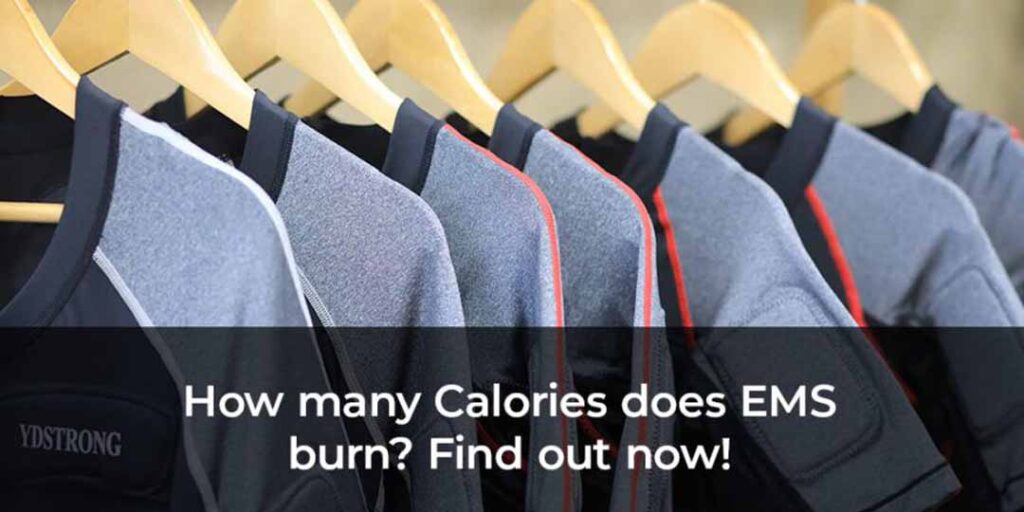-
Table of Contents
- How Many Calories Can a Person Burn Using Electrical Muscle Stimulation?
- The Basics of Electrical Muscle Stimulation
- The Science Behind Calorie Burning
- Studies on EMS and Calorie Burning
- Study 1: The Effects of EMS on Calorie Expenditure
- Study 2: EMS and Fat Loss
- Factors Affecting Calorie Burning with EMS
- Conclusion
How Many Calories Can a Person Burn Using Electrical Muscle Stimulation?
Electrical Muscle Stimulation (EMS) has gained popularity in recent years as a way to enhance muscle strength and tone. But can it also help burn calories? In this article, we will explore the potential calorie-burning effects of EMS and examine the scientific evidence behind it.
The Basics of Electrical Muscle Stimulation
Before diving into the calorie-burning aspect, let’s first understand what EMS is. Electrical Muscle Stimulation involves the use of electrical impulses to stimulate muscle contractions. These impulses are delivered through electrodes placed on the skin, targeting specific muscle groups.
EMS is commonly used in physical therapy to help patients recover from injuries or surgeries. It can also be used as a training tool to enhance muscle strength and improve athletic performance. The electrical impulses mimic the signals sent by the central nervous system to activate muscle fibers, leading to muscle contractions.
The Science Behind Calorie Burning
Calories are a measure of energy, and our bodies require energy to perform various activities, including muscle contractions. The more intense the muscle contractions, the more energy is needed, resulting in a higher calorie burn.
When it comes to EMS, the calorie-burning effect is not as straightforward as with traditional exercise. While EMS can stimulate muscle contractions, it does not necessarily lead to the same level of energy expenditure as voluntary muscle contractions.
Research has shown that EMS can increase muscle strength and endurance, but its impact on calorie burning is still a topic of debate. Some studies suggest that EMS can indeed contribute to calorie expenditure, while others argue that the effects are minimal.
Studies on EMS and Calorie Burning
Several studies have been conducted to investigate the calorie-burning potential of EMS. Let’s take a closer look at some of the key findings:
Study 1: The Effects of EMS on Calorie Expenditure
In a study published in the Journal of Strength and Conditioning Research, researchers examined the effects of EMS on calorie expenditure. They compared the energy expenditure during EMS sessions to that of traditional exercise.
The study involved 20 participants who underwent EMS sessions targeting the quadriceps muscles. The researchers measured the participants’ oxygen consumption and heart rate during the sessions to estimate calorie expenditure.
The results showed that EMS sessions led to a significant increase in calorie expenditure compared to rest. However, the calorie burn was still lower than that of traditional exercise. The researchers concluded that while EMS can contribute to calorie burning, it may not be as effective as voluntary muscle contractions.
Study 2: EMS and Fat Loss
Another study published in the European Journal of Applied Physiology investigated the effects of EMS on fat loss. The researchers examined whether EMS could help reduce body fat and improve body composition.
The study included 35 participants who underwent EMS sessions targeting the abdominal muscles. The researchers measured body fat percentage and waist circumference before and after the intervention.
The results showed a significant reduction in body fat percentage and waist circumference after the EMS intervention. However, it is important to note that the participants also followed a calorie-restricted diet during the study, which could have contributed to the fat loss.
Factors Affecting Calorie Burning with EMS
Several factors can influence the calorie-burning effects of EMS. Understanding these factors can help individuals make informed decisions about incorporating EMS into their fitness routines. Here are some key factors to consider:
- Intensity of the Electrical Impulses: Higher intensity levels can lead to more intense muscle contractions and potentially higher calorie burn.
- Duration of the EMS Sessions: Longer sessions may result in more calorie expenditure.
- Muscle Groups Targeted: Different muscle groups have varying energy requirements, so targeting larger muscle groups may lead to a higher calorie burn.
- Individual Fitness Level: Individuals with higher fitness levels may have a higher calorie burn due to their ability to generate stronger muscle contractions.
Conclusion
While EMS can contribute to calorie burning, its effectiveness may not be on par with traditional exercise. The calorie-burning potential of EMS is influenced by various factors, including the intensity of the electrical impulses, duration of the sessions, muscle groups targeted, and individual fitness level.
It is important to note that EMS should not be seen as a replacement for regular exercise and a healthy diet. It can be used as a complementary tool to enhance muscle strength and tone, but its impact on calorie burning should not be overestimated.
If your goal is to burn calories and lose weight, incorporating a combination of cardiovascular exercise, strength training, and a balanced diet is still the most effective approach. EMS can be a valuable addition to your fitness routine, but it should be used in conjunction with other forms of exercise for optimal results.
Remember, always consult with a healthcare professional or certified trainer before starting any new exercise program, including EMS.




